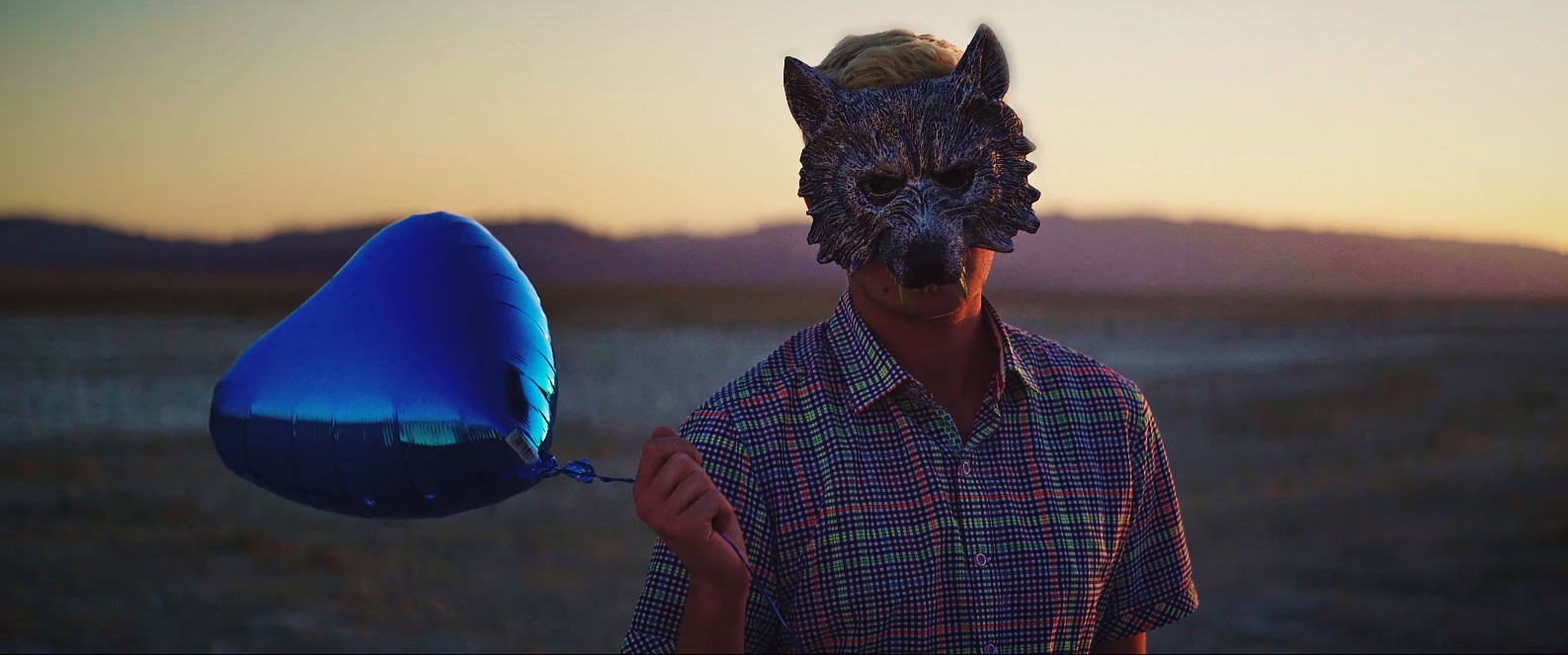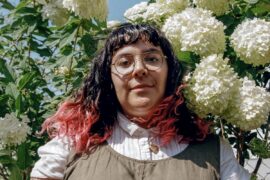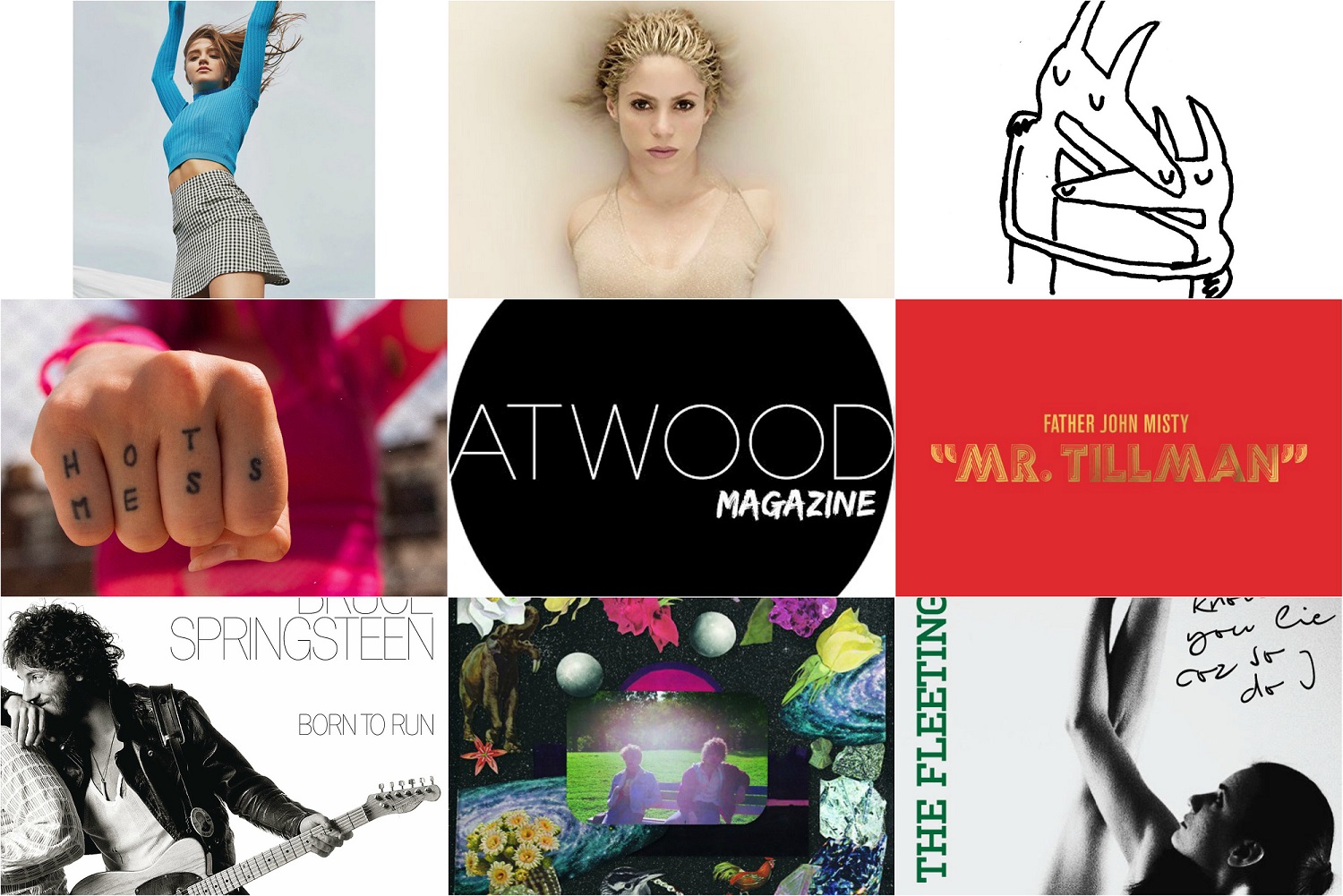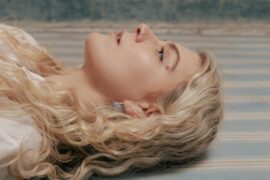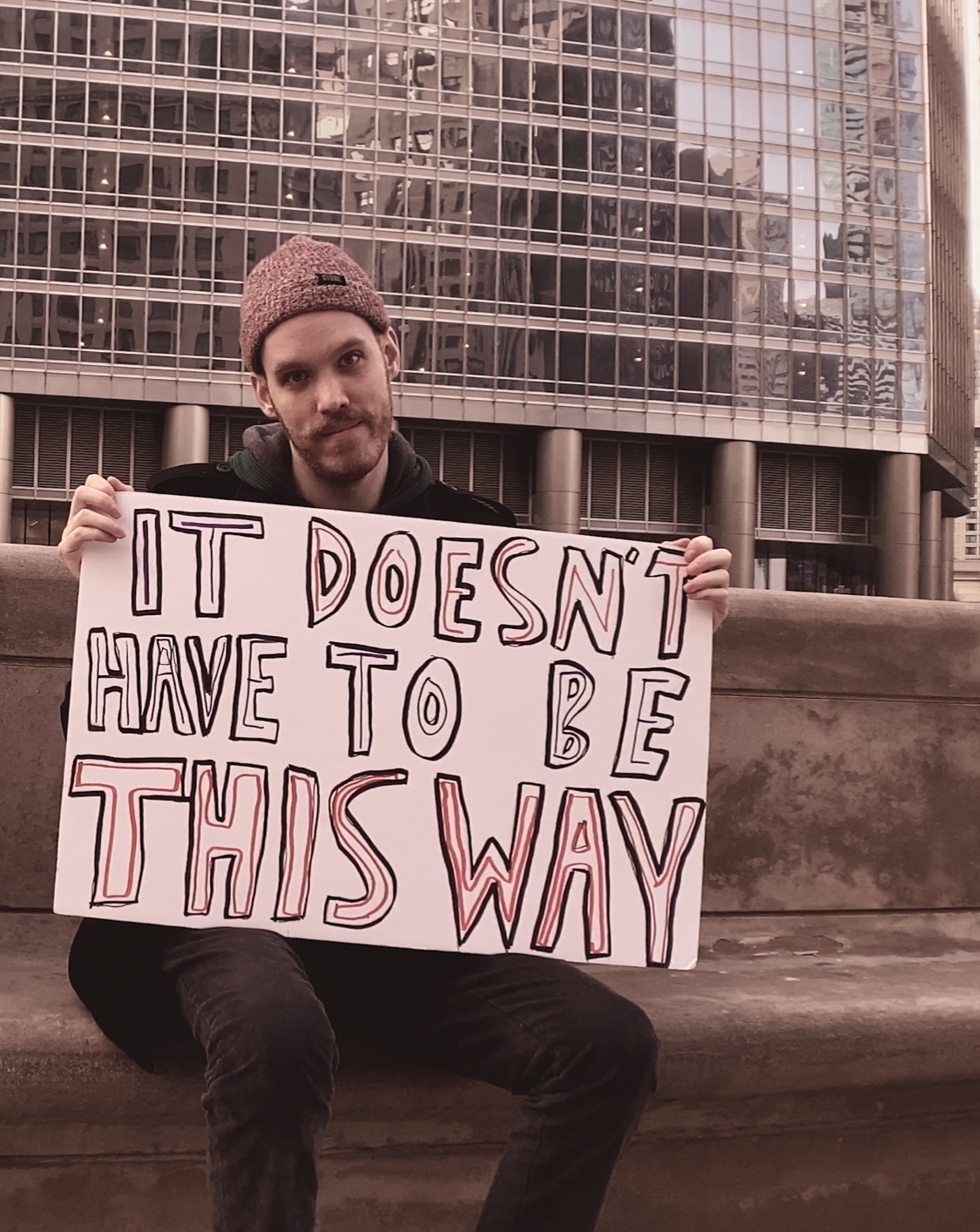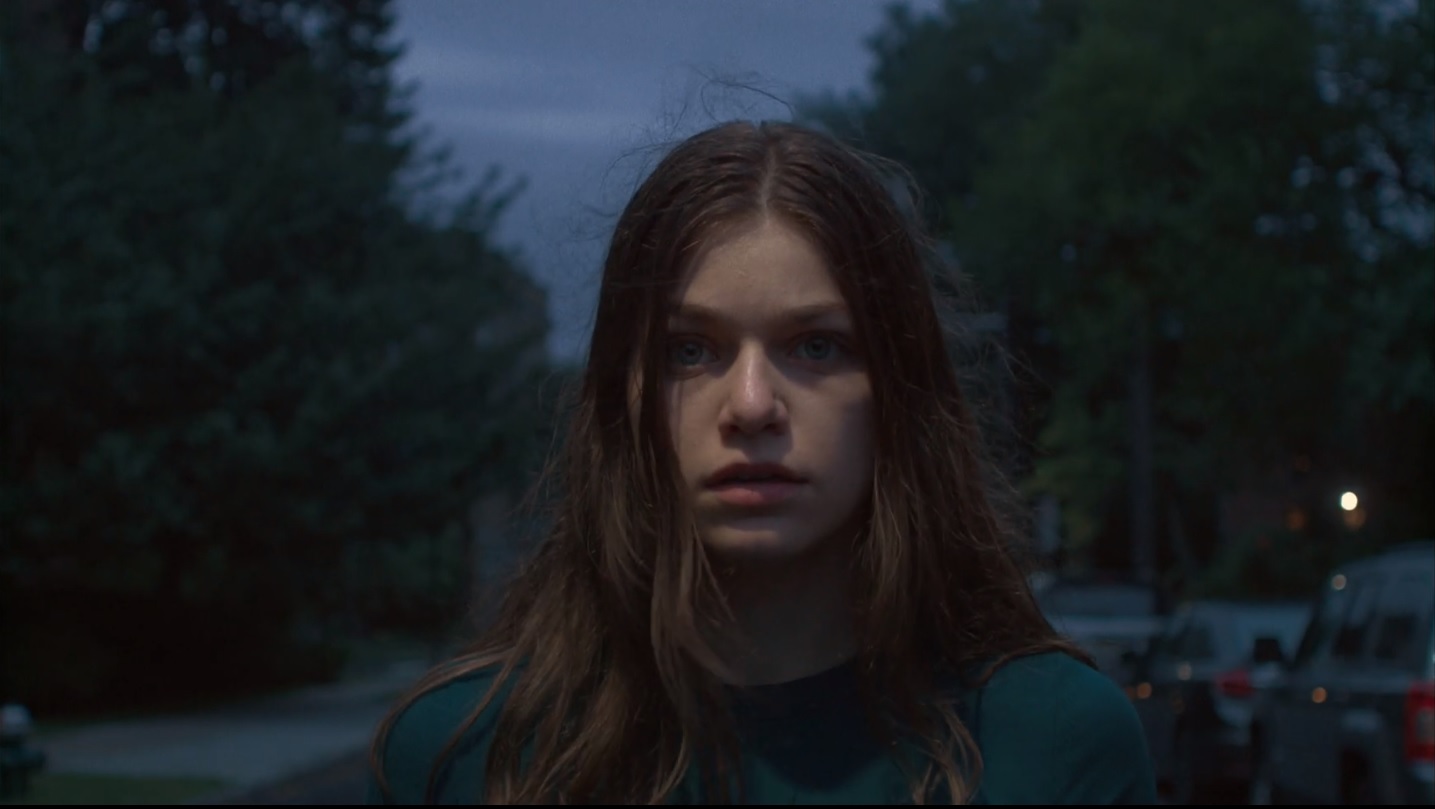Kameron Marlowe builds a world of sad songs, characters, and stories on his third studio album, ‘Sad Song for the Soul.’ Drawing on country, blues, soul, and folk traditions, the North Carolinian singer/songwriter invites listeners to pull up a chair, pour a glass of whiskey, and join in the reverie.
‘Sad Songs for the Soul’ – Kameron Marlowe
Country singer Kameron Marlowe’s Sad Songs for the Soul feels like a place to lay his hat.
Released on February 21st and produced by Ben West, this is the 27-year-old’s third record with Sony Music Nashville. Listening to the album, one can’t help but hear a person wise beyond his years, with a voice that recalls Chris Stapleton, Ryan Beaver, and a young John Legend.
Hailing from Kannapolis, North Carolina, Marlowe got his start singing in church and joined a band in high school. In 2018, a talent scout found one of Marlowe’s songs on YouTube and got him an audition on The Voice. It led to him moving to Nashville and independently releasing his critically and commercially acclaimed debut single, “Giving You Up.”
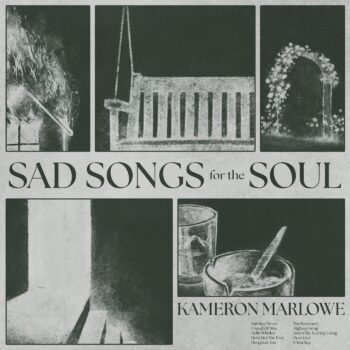
Fast-forwarding six years, Sad Songs for the Soul follows Marlowe’s 2024 sophomore album Keepin’ the Lights On, and features songs like “Burning House,” “Hello Whiskey,” and the instant highlight, “Here Lies the Fool.”
“Here Lies the Fool” is one of the best country songs this writer has heard in a long time. Lyrically it’s clever, amd musically it’s a constellation of folk, country, and blues, with each fading in and out as the story demands. Written by Marlowe, Laci Kaye Booth, and producer Ben West, “Here Lies the Fool” is the standout song on the ten-track record – a collection of introspective, self-aware, and often dark songs pulled straight from thoughts and memories that only rear their ugly heads at 2 AM.
When the empty whiskey sour’s
become withered graveyard flowers
When buzzin’ neon lights
break the silent midnight rule
A memory I can’t let go,
the last words she said, they echo
I made this bed
This barstool was a headstone
Here lies the fool
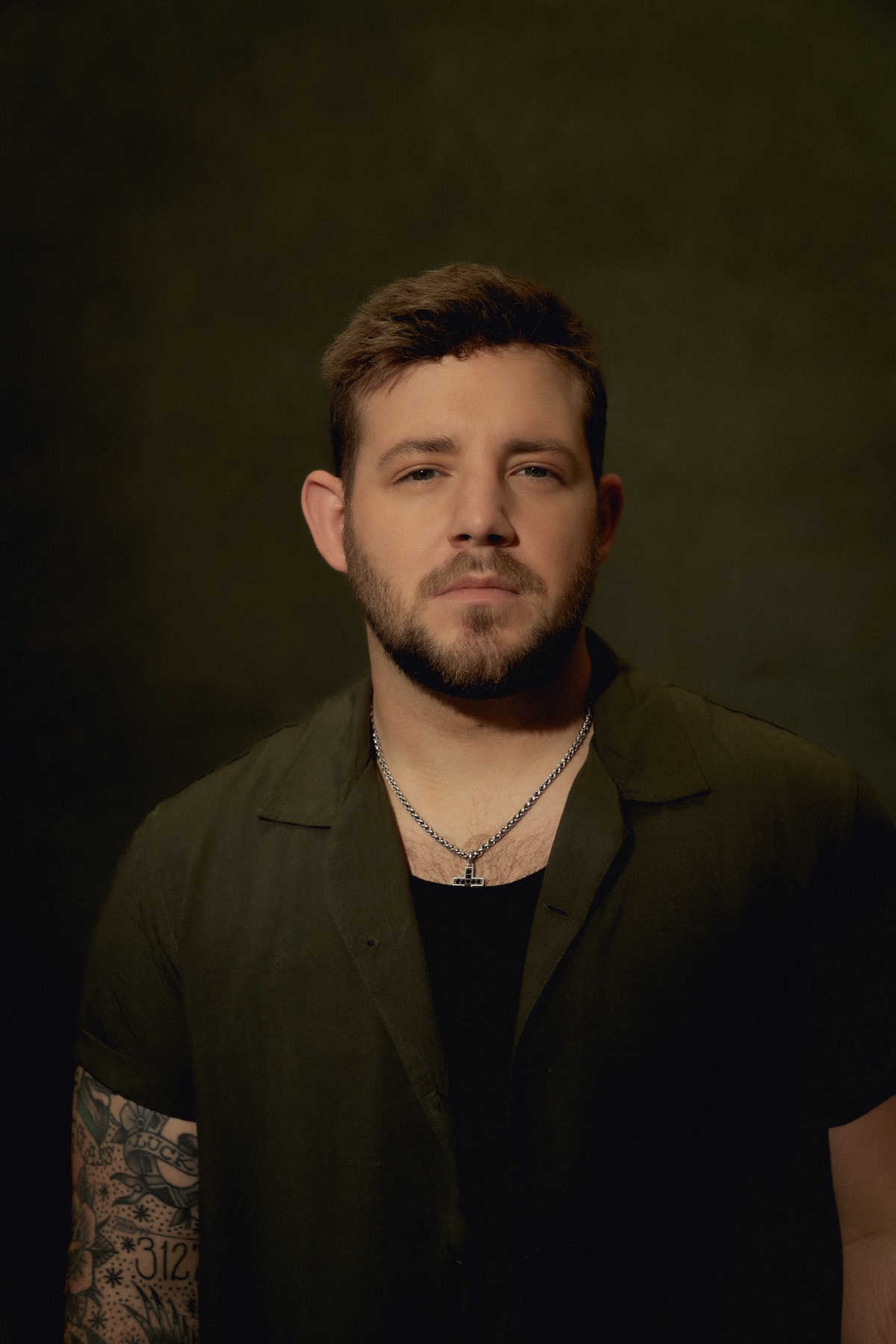
After listening to Sad Songs For the Soul you may be under the impression that Marlowe spends his days alone and his nights in dark bars.
This couldn’t be further from the truth, in his own words, “things couldn’t be better!” He’s currently on tour, gearing up for this album’s release and recently became engaged. Oh, and he has a rescue dog, Scooby!
Marlowe sat down with Atwood Magazine on a grey and wet February afternoon in Nashville. We talked about the making of the record, the beauty of sad songs, and what’s next for him.
— —
:: stream/purchase Sad Songs for the Soul here ::
:: connect with Kameron Marlowe here ::
— —
“Here Lies the Fool” – Kameron Marlowe
A CONVERSATION WITH KAMERON MARLOWE
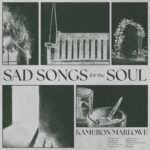
Atwood Magazine: Sad Songs For the Soul is a departure from your usual sound and style. Can you talk about what inspired the sound?
Kameron Marlowe: This record was a passion project for me. I get very bored very quickly, and if I start doing the same thing for too long, I have to switch it up or I will just dig myself a hole. So that’s kind of what this project was. I just needed to be creative again, be fresh in my creativity, and kind of bring this new sound to life that has been in my head and what I’ve been wanting to do.
I started this whole project off with a song called “Highway Song” that I wrote by myself. It’s a story about somebody that is just going through it, really digging themselves a hole, really challenging themselves and the feeling like the world has got them down. This whole project is really the diary of that guy.
Was that the first song you wrote for the record?
Kameron Marlowe: That was the first song I wrote for the project but also, I would say “Burning House” was the second idea I had for the project. I didn’t know if this was going to be like a four song, two song or 15 song kind of thing, I just was like, ‘man, if I could ever put that song out and like, put it on a project, I don’t know where it would live, but it found its home on this.
[“Burning House” is a song by the singer/songwriter Cam from her album Untamed]
What was behind deciding to cover that song by Cam?
Kameron Marlowe: I think that is one of the most beautiful songs written.
One thing I love about that song is just how visual her writing is, and I think that’s really special. That’s how I try and push myself to write. I try and see music videos when I write. Like what would I see on the counter or what would I see in a different room if I was in the music video. That has always been like my mind set towards writing. and I feel like she nailed that and hit that out of the park with that song.
I had a dream about a burning house
You were stuck inside
I couldn’t get you out
I lay beside you and pulled you close
And the two of us went up in smoke
I found your record very visual. A couple of the tracks really stand out “How’s the Leaving Going” and “Here Lies the Fool.” I know you co-wrote the former with Laci Kaye Booth and Ben West, your producer, who by the way I love. Laci’s record last year was brilliant.
Kameron Marlowe: Laci is so talented. It makes me sick how talented she is. She’s such a superstar and she has no idea how big of a superstar she is, and I love it!
In terms of sound, you said it was in your head for a while. Is there any inspiration you draw from? Other artists or books or films?
Kameron Marlowe: Honestly the sound of the project came from the room we recorded in. It was actually an old feed and seed store that this guy had bought and converted into a studio. It sounded so hollow and so lonely in there, and it was like the perfect place to record sad songs. It just had the mojo.
It’s basically a storefront in this town called Gallatin, Tennessee, and at the end of the record, you can kind of hear rain and all that?
All that we did was… if you listen closely, you can hear the rain throughout the whole track, but we had a mic and we just opened the door to the room and just cut the song, and it was raining that night. It was really cool, really artistic to get out there and record that way. It was the perfect, perfect place to record.
Did you record with a live band or was it you and your producer playing different instruments?
Kameron Marlowe: No, that’s exactly how we did it. We played it all live together. We had big room mics set up, like 5-foot, 10-foot, 20-foot away to just capture the nuances of the room. That way it had this full, consistent sound. I wanted it to feel like it was recorded it one place with the same group of people.
I nerd out over this stuff so I can talk about this stuff all day. [laughs]
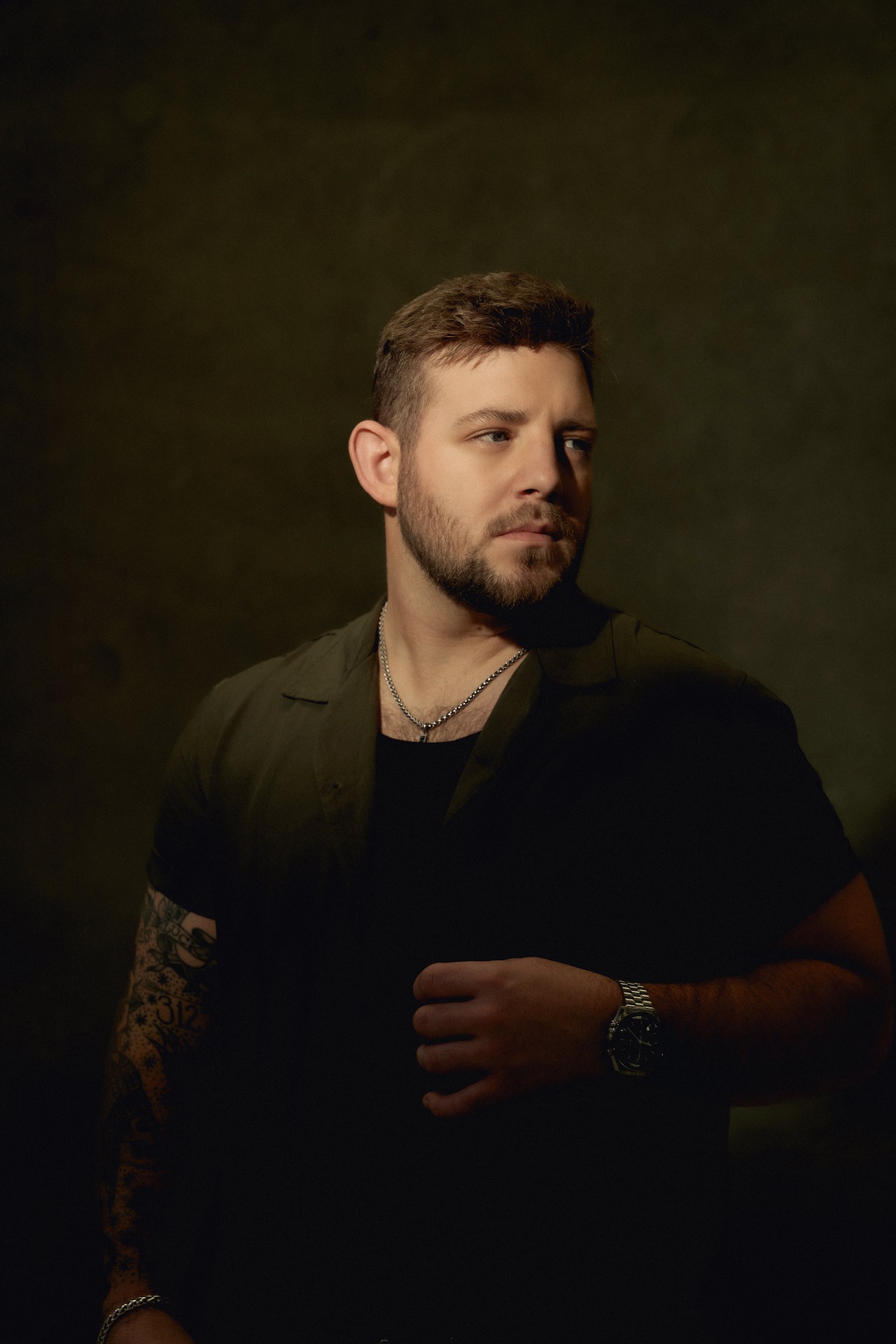
Kameron Marlowe: I think we did three days of recording. The final takes are pretty much the last time we played it through. We would play it down, make some changes, play it down again, and then once we felt like we got the magical combination we decided to roll with that and then we would hit record one last time, play it through, and then mix it from there.
Sounds like you were involved from beginning to end, including the mixing and mastering?
Kameron Marlowe: Yes. I’m probably way too involved, but I love producing. I love just getting into the music. That’s why I think I needed this project so much, because I needed something to latch onto that I could fully feel like was from me, and this project embodies that.
On the one hand the album sounds like country music 40-50 years ago, but at the same time, it’s very contemporary.
Kameron Marlowe: I appreciate that.
It’s a very sad record.
Kameron Marlowe: It’s so sad. [laughs]
And very dark. You compare a barstool to a headstone, and an empty whiskey bottle to graveyard flowers. I love a good sad song, so the record is definitely for me. You’re quite happy though, things are going well for you, so where does the sadness come from?
Kameron Marlowe: Things could not be better. That’s the wildest part about this *laughing*.
I feel like for me, I’ve always been… I don’t know. Happy songs don’t give me the same feeling that I can get from a sad song. I feel like I can attach myself to sad songs. I feel like I could feel more emotion out of them. That’s why I tend to write darker songs because I want to feel the emotion. Even in the way I sing, I try and emote and like really make the listener feel like they are hearing that person’s life through the song.
Do you have a favourite off the record?
Kameron Marlowe: I would have to say, “If You Stay.” What’s weird about that song is I feel like it is the happiest sounding song, but it actually… like if you really pay attention to the words, it is this guy begging and pleading with this girl and saying anything that he possibly can to get her to stay and not to leave him.
It’s super sad if you listen to the words and really dig into it, and I think that’s kind of a beautiful thing that we did where kind of made it feel a little bit more, like happy and then the meaning is a little darker. It’s definitely the darkest one on the record for sure.
Going back to the beginning, you grew up in North Carolina, you went to college, had to drop out to take care of your mum, and then ended up on The Voice in 2018. Did your upbringing point to a career in music?
Kameron Marlowe: I did not know I was going to get into music. Music wasn’t on my radar. I loved playing in small bars and pubs around town, but it was never… I think, honestly, it all started when I went on The Voice and I realised, ‘dang, these people actually do this for a living.’
Once I got a taste of doing music every day, I was like, ‘you know what?’ This is true, this is what fills me up, this is what gives me passion to want to do everything.’ I don’t know. it’s like, I can’t really explain how much music really means to me.
Once I tasted that and I couldn’t even think about doing anything else, so I immediately started going to Nashville as much as I could, meeting as many people, found a group of friends and hit it up.
They said they were getting a house. We were all, not gonna lie to you, we were all a little drunk, at a bar called Red Door in Nashville, and these two guys were like, ‘hey man, we’re getting a house, are you are you in?’ And I was like, ’yeah man, absolutely!’ Not thinking they would ever call me again, and they ended up calling me like the two or three days later, and said, ‘we found the house, here’s what rent’s gonna be, are you in or you out?’
And I had to make a decision there and then if I wanted to bet on myself and I took the bet, and I’m glad I did. I couldn’t imagine not doing music. Even though it’s the most frustrating business I have ever been in my entire life, but even so, I would not change a thing.
What is next for you?
Kameron Marlowe: I don’t know how much I’m supposed to say about this, but I’ve got a lot of new music coming as well. It’s not going to be down the “sad songs” lane, it’s going to be back to regular scheduled programme, with my usual sound, my style, so I’m very excited to see how this next record shapes up. I can’t wait to get in and record it. I’m just now getting the songs together. It never stops, but like I said, I wouldn’t change it for nothing.
Would you ever return the sound from this record or was it more of an experiment?
Kameron Marlowe: I think I would.
The full title of the record was actually supposed to be, Sad Songs For the Soul Volume 1: Heaven in the Bottle, so it was a super long title, and I was going to have Volume 1, Volume 2, Volume 3 or whatever, just depending on how people liked it, but I’ve had some people talk me down and say that title was too long, but there’s probably going to be a Volume 2 eventually.
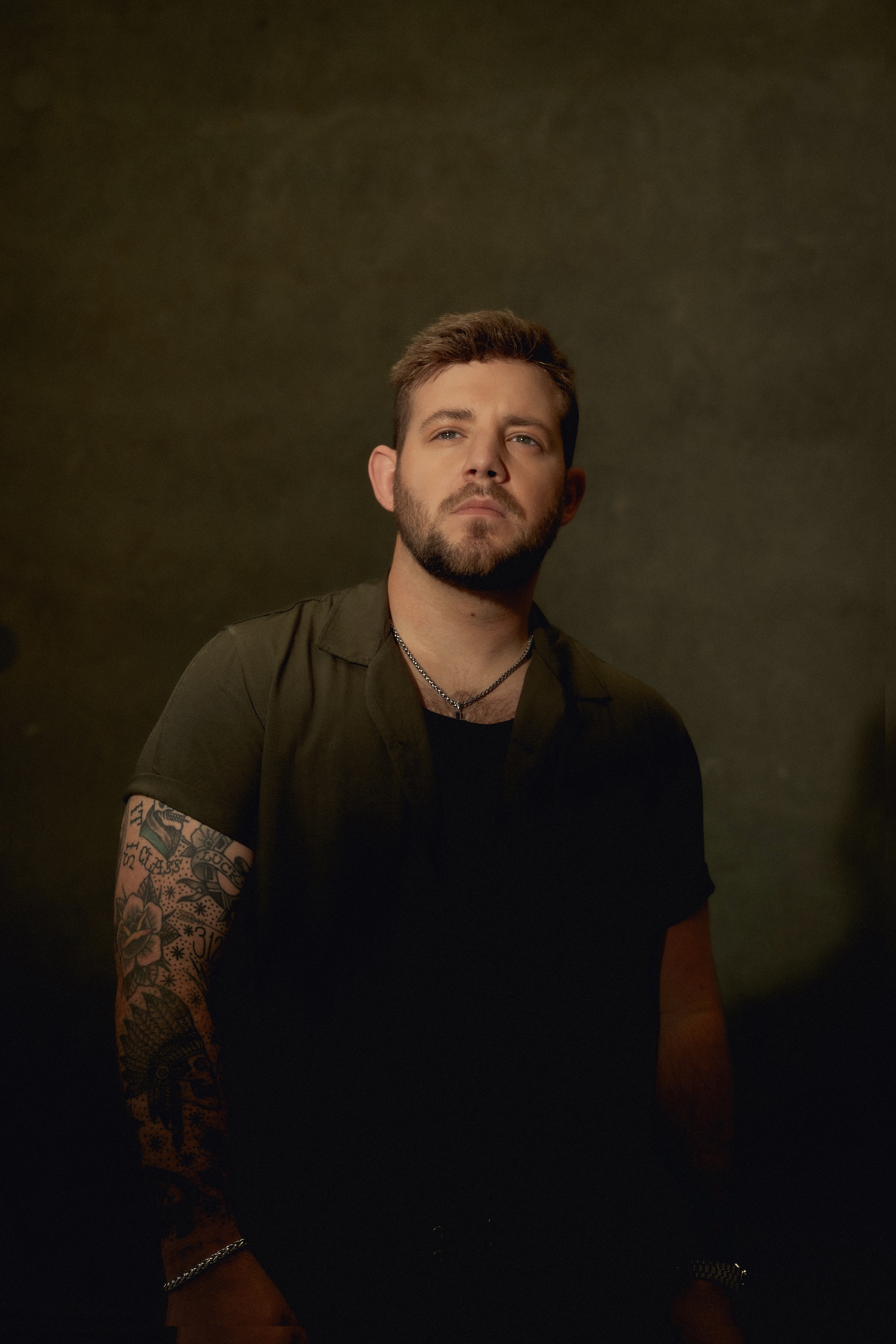
My last question is the artwork for the record, very cool, really artistic. It’s a negative, isn’t it?
Kameron Marlowe: Thank you so much.
Yes, that’s exactly what it is. It kind of came from a conversation with me and my manager. I really did not want to have my face on this project, because it’s not about me, it’s its own thing, it’s its own world, it needs to stay in its own world.
I’m not going to lie to you, I love the colour green, so that colour green on the album is my favourite colour green, so we started there, and we had an artist kind of draw up, like their thoughts of each of the songs as we needed artwork for each of the singles.
They came up with designs and we would ask them to change things and kind of figure it out altogether, and it finally came together, and I was like, ‘I love these, but what are we going to do for the full-length cover?’ I loved all the other ones so much, I was like, ‘we’re just going to put them all together on the on the page.’
Like the record, the artwork is up for interpretation.
— —
:: stream/purchase Sad Songs for the Soul here ::
:: connect with Kameron Marlowe here ::
— —
— — — —

Connect to Kameron Marlowe on
Facebook, Twitter, TikTok, Instagram
Discover new music on Atwood Magazine
© Ben Dartnell
:: Stream Kameron Marlowe ::

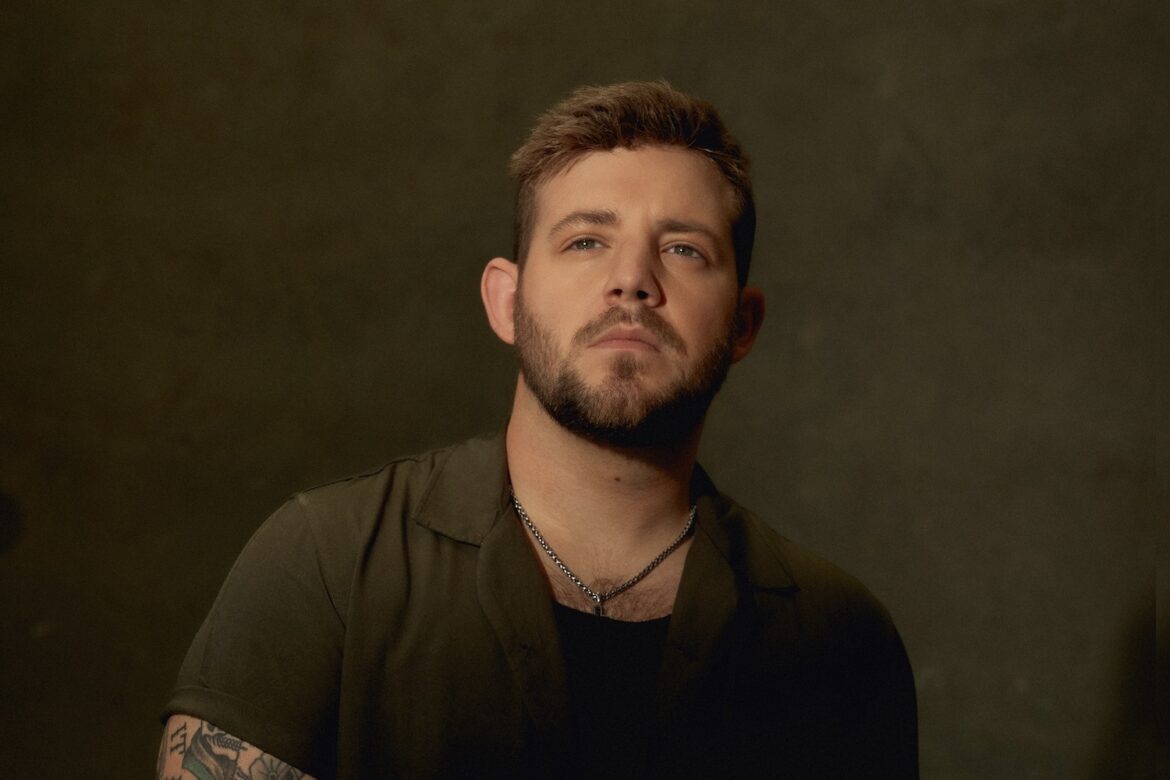
 © Ben Dartnell
© Ben Dartnell